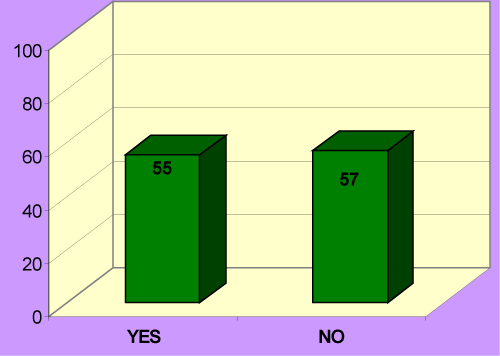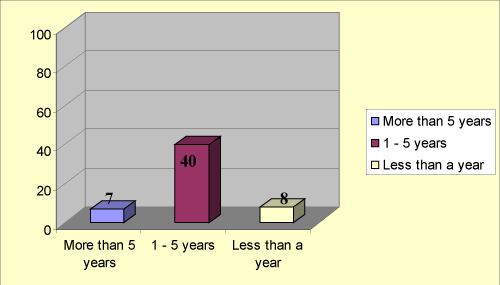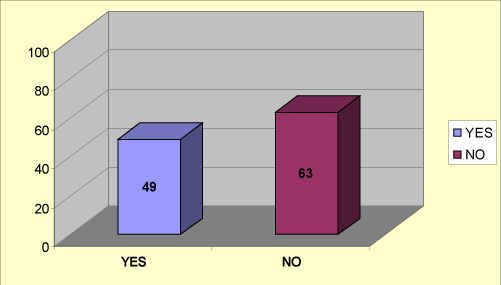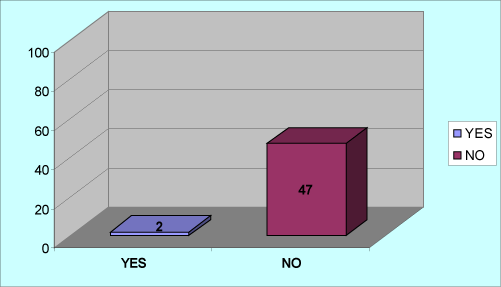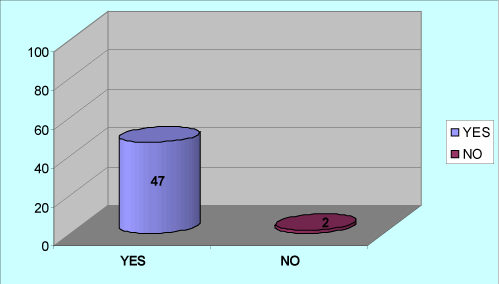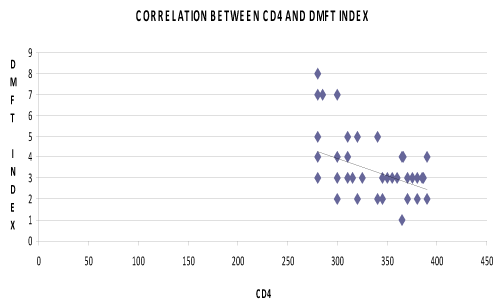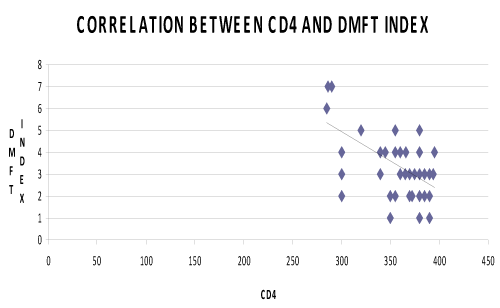| Research Article |
Open Access |
|
| Venkatesh Kasiraj Gandhiraj* |
| Senior Lecturer, Priyadarshini Dental College, Villivakkam, Chennai 600049, India |
| *Corresponding author: |
Venkatesh Kasiraj Gandhiraj
Senior Lecturer, Priyadarshini Dental College
No 10 M.T.H Road, Villivakkam
Chennai 600049, India
Tel: +91 9176119199
E-mail: drkgvz@yahoo.co.in |
|
| Â |
| Received August 23, 2012; Published October 30, 2012 |
| Â |
| Citation: Kasiraj GV (2012) Correlation of CD4 Count with Dental caries in HIV Seropositive Individuals with and without ART (Anti Retroviral Therapy). 1:442. doi:10.4172/scientificreports.442 |
| Â |
| Copyright: © 2012 Kasiraj GV. This is an open-access article distributed under the terms of the Creative Commons Attribution License, which permits unrestricted use, distribution, and reproduction in any medium, provided the original author and source are credited. |
| Â |
| Abstract |
| Â |
| Introduction: HIV is a retroviral disease caused by Human immunodeficiency virus (HIV), and is characterized by profound immunosuppression leading to opportunistic secondary neoplasms and neurological manifestations. These viruses store their genetic information as RNA, which is converted in to DNA by a special enzyme Reverse Transcriptase (RT). |
| Â |
| Aim: The aim of the study was to correlate the CD4 count and Dental caries activity in HIV seropositive individuals, with and without Anti Retroviral Therapy (ART). |
| Â |
| Materials and methods: Subjects above the age of 20 years who were HIV seropositive were included in this study. 112 subjects were enrolled in this study, 55 subjects were under Anti Retro viral Therapy and 57 subjects were not under Anti retroviral Therapy. |
| Â |
| A structured profoma was used to collect the data. The first part consisted of variables such as age, educational status, and use of ART, etc. The second part of the profoma consists of Dynamical Mean Field Theory (DMFT) index by WHO and CD4 count. |
| Â |
| The data was entered in excel sheet. The data was analysed by using SPSS (Statistical Package for Social Sciences). |
| Â |
| Results: In this study 41% of the subjects were within the age group of 31-40 years. 30% of the subjects had finished high school, and only 7% of the subjects were graduates. |
| Â |
| Among the study subjects who were under ART (Anti Retroviral Therapy), 7% were under Anti Retroviral Therapy for more than 5 years, 40% were within a year to 5 years, and only 7% were with a span of a year. |
| Â |
| The dental caries increases as the immune system is affected by HIV. There is a need to educate dental surgeons on safe management on dental diseases in HIV Sero positive individuals. |
| Â |
| Conclusion: Patient’s confidentiality and public perception of the same become very important to ensure that such patients have confidence in the dentist, and reveal HIV C and other disease status. This will also help to protect the dentists from accidental infections. |
| Â |
| Keywords |
| Â |
| HIV; Anti Retroviral Therapy |
| Â |
| Introduction |
| Â |
| HIV is a retroviral disease caused by Human immunodeficiency virus (HIV), and is characterized by profound immunosuppression leading to opportunistic secondary neoplasms and neurological manifestations. These viruses store their genetic information as RNA, which is converted in to DNA by a special enzyme Reverse Transcriptase (RT). |
| Â |
| HIV is easily transmitted through needles and syringes contaminated with infected blood, sharing intravenous drug paraphernalia puts you at high risk of HIV and Hepatitis. |
| Â |
| Saliva has been used as an alternative body fluid other than blood for detection of (HIV) Human Immuno deficiency Virus. Testing of saliva is relatively less expensive sampling technique than blood specimens. Vein puncture increases the risk of transmission to health care workers through hollow bore needle accidents, and test tube breakage has paved the way for oral fluids. |
| Â |
| Preventive measure is that individuals with a compromised immune system need to avoid bacterial infections. HIV-positive people should be encouraged to receive dental examinations every six months. Oral problems, such as dental caries and periodontal disease, are the result of bacterial infections. Individuals with HIV can protect themselves by regular brushing and periodic dental examinations. |
| Â |
| Very few studies have been done to assess the CD4 count in HIV seropositive individuals and to relate it with dental caries and hence, this study was taken in to account. |
| Â |
| Aim |
| Â |
| To determine the association between Dental caries and CD4 count in HIV seropositive individuals, under ART and without ART (Anti Retroviral Therapy). |
| Â |
| Materials and Methods |
| Â |
| Study population |
| Â |
| HIV seropositive individuals who had registered with the Non Governmental Organisations (NGOs) in Chennai City and who were above the age of 20 years were taken in to the study. Individuals who were cooperative and gave the informed consent were included in this study. |
| Â |
| Before commencement of the study, ethical clearance was obtained from the Institutional Ethical Committee of Saveetha University, Chennai and official permission from the presidents and administrators of the NGO where the study was to be carried out. |
| Â |
| The pro forma consisted of demographic variables, occupation, marital status, oral hygiene practices, etc as shown in (Table 1). The clinical examination consisted of assessing DMFT score using WHO criteria. The CD4 count was recorded from the study subject’s clinical record. 112 subjects were included in the study. 55 of the subjects were under ART, and 57 of the subjects were not under ART. |
| Â |
|
|
Table 1: Demographic Variable of the Study Population. |
|
| Â |
| Sampling design |
| Â |
| Convenient sampling was the method used to select the HIV sero positive individuals. |
| Â |
| Data analysis |
| Â |
| The data was entered in excel sheet. The data was analysed by using SPSS (Statistical Package for Social Sciences).Correlation analysis was used to find the association between Dental caries and CD4 count among HIV seropositive individuals, with and without ART. |
| Â |
| Results |
| Â |
| Are you under the use of Anti retro viral therapy? |
| Â |
| Figure 1 reveals that among the study subjects, 55% of the subjects were under anti retroviral therapy, P>0.05. |
| Â |
|
|
Figure 1: Use of Anti retro viral therapy. |
|
| |
| Â |
| Duration of ART |
| Â |
| Figure 2 shows that among those subjects who were under ART (Anti Retro viral Therapy), 7% were under ART for more than 5 years and 40% were within a year to 5 years. Only 8% were with a span of a year, P=0.00. |
| Â |
|
|
Figure 2: Duration of Anti Retro viral Therapy. |
|
| Â |
| Have you visited the dentist for treatment? |
| Â |
| Figure 3 shows that among the study subjects, 49% had visited a dentist for treatment, P>0.05. |
| Â |
|
|
Figure 3: Percentage of dental visits. |
|
| Â |
| Information about the disease revealed? |
| Â |
| Figure 4 reveals that among the subjects (49%) who had visited the dentist for treatment, only 2% of the subjects had visited a dentist for treatment, P=0.00 |
| Â |
|
|
Figure 4: Revealing their HIV infection to dentist. |
|
| Â |
| Were you satisfied with the treatment? |
| Â |
| Figure 5 shows that the subjects who had revealed to the dentist about their disease, 2% of the subjects were not happy with the treatment, P=0.00. |
| Â |
|
|
Figure 5: Treatment Satisfaction with dentist. |
|
| Â |
| HIV seropositive individuals under ART |
| Â |
| Figure 6 shows that there is a negative correlation between CD4 count and DMFT index. As the CD4 count lowers, the DMFT index increases P=0.002 in seropositive individuals under ART. |
| Â |
|
|
Figure 6: 8.6 Correlation between CD4 and dental caries in HIV seropositive individuals under ART. |
|
| Â |
| HIV seropositive individuals not under ART |
| Â |
| Figure 7 shows that there is a negative correlation between CD4 count and DMFT index in HIV seropositive individuals, not under Anti Retroviral Therapy. As the CD4 count lowers, the DMFT index increases, P=0.000. |
| Â |
|
|
Figure 7: 8.7 Correlation between CD4 and dental caries in HIV seropositive individuals not under ART. |
|
| Â |
| Discussion |
| Â |
| In this study, 41% of the subjects were within the age group of 31-40 years. 30% of the subjects had finished high school, and only 7% of the subjects were graduates. More than 36% of the people belonged either to the skilled or unskilled worker group. The reason could be people who had registered in these NGOs either belonged to the skilled worker or unskilled worker group and were unaware of this disease, mode of transmission and lack of awareness of the barrier techniques. Another reason could be unregistered or unreported cases of higher educational groups and the higher society of people. |
| Â |
| Among the study subjects who were under ART (Anti Retro viral Therapy), 7% were under Anti Retroviral Therapy for more than 5 years, 40% were within a year to 5 years, and only 7% were with a span of a year. They would have acquired the infection much earlier but started ART regimen at a much later stage, since their CD4 counts decreased drastically below 250. Increase in the CD4 count and reduction in the viral loads reduces the incidence and prevalence of opportunistic infection [1]. |
| Â |
| Administration of Anti Retroviral Therapy is a life long process and expensive. People wanting therapy delayed the therapy due to extended family duties and adverse side effects. The side effects included parotid gland enlargement, xerostomia and warts, according to the study done by Patton et al. [2]. Similar study was also done by Phelan et al. [3], where HIV seropositive individuals CD4 counts below 200 were reported to have reduced salivary flow. |
| Â |
| 49% of the subjects had visited the dentist for treatment and among these subjects only 2% revealed the dentist about their disease, and they were not happy with the treatment. Common reasons for failure to disclose include fear of refusal, or some other negative attitude and concerns about confidentiality. Another reason could be the social stigma, and unwillingness to treat such seropositive individuals. Study done by Kunzel and Sadowsky [4] to assess HIV related attitude and orientation of male and female dentists revealed that male dentists indicated willingness to participate in treating HIV seropositive individuals. |
| Â |
| Study done by Shiboski [5] shows that dental professionals in Tanzania-Africa had poor knowledge of HIV related oral manifestations, and suggested a need for education of HIV related oral lesions in the country. |
| Â |
| All health care workers should provide clinical care to all individuals regardless of their gender, ethnicity, age or sexual orientations. The WHO advises dentists to provide dental care for HIV infected individuals; however, on such advice not all dental practitioners are readily willing to provide care to individuals with HIV disease [6]. |
| Â |
| Decreased salivary flow rates may not only increase the risk of dental caries, but may also have a further negative impact on quality of life because of difficulty in chewing swallowing and tasting food. There is an immediate need for oral health care and referral, the treatment and prevention of oral diseases and health promotion, particularly among the under served, disadvantaged population groups of developing countries [7]. |
| Â |
| In this study, the subjects under Anti Retroviral Therapy and non Anti Retroviral Therapy have a negative correlation between CD4 count and DMFT index. As the CD4 count in HIV seropositive individuals decreases, the DMFT index rises. Patients CD4 count improves the immune system and alters the bacterial count. Laboratory tests like CD4 count remains useful adjunctions for understanding the epidemiology of HIV disease [8]. |
| Â |
| Reports from North America also suggest a relation between Anti Retroviral Therapy and increased risk of dental caries [9]. Study done by de Faria et al. [10] also suggests an association between decreased salivary flow and HAART. |
| Â |
| Most medication is excreted in saliva and may have an effect on the oral microorganisms. This provides a rational basis for considering Anti Retroviral Therapy as a potential confounder of the CD4 count [11]. |
| Â |
| ART drugs increase CD4 count, decrease the HIV RNA viral load, and as a result decrease in the oral opportunistic infections [12]. One of the explanations could be as the immunity of HIV seropositive individuals improves, the caries experience improves. |
| Â |
| The study done by Chattopadhyay et al. [11] shows that CD4 count serves as an important marker of HIV infection. Persons with low CD4 count have higher incidence of Oral candidiasis, Oral hairy leukoplakia, and HIV related oral diseases, compared to those with higher CD4 count. CD4 cell counts 13]. |
| Â |
| |
| References |
| Â |
- Greenwood I, Zakrzewska JM, Robinson PG (2002) Changes in the prevalence of HIV-associated mucosal disease at a dedicated clinic over 7 years. Oral Dis 8: 90-94.
- Patton LL, McKaig R, Strauss R, Rogers D, Eron JJ Jr (2000) Changing prevalence of oral manifestations of human immuno-deficiency virus in the era of protease inhibitor therapy. Oral Surg Oral Med Oral Pathol Oral Radiol Endod 89: 299-304.
- Phelan JA, Mulligan R, Nelson E, Brunelle J, Alves ME, et al. (2004) Dental caries in HIV-seropositive women. J Dent Res 83: 869-873.
- Kunzel C, Sadowsky D (1995) Assessing HIV-related attitudes and orientations of male and female general dentists. J Am Dent Assoc 126: 862-871.
- Shiboski CH (2002) HIV-related oral disease epidemiology among women: year 2000 update. Oral Dis 2: 44-48.
- El-Maaytah M, Al Kayed A, Al Qudah M, Al Ahmad H, Moutasim K, et al. (2005) Willingness of dentists in Jordan to treat HIV-infected patients. Oral Dis 11: 318-322.
- Silverman S Jr (1991) AIDS update. Oral manifestations and management. Dent Clin North Am 35: 259-267.
- Hilton JF, Alves M, Anastos K, Canchola AJ, Cohen M, et al. (2001) Accuracy of diagnoses of HIV-related oral lesions by medical clinicians. Findings from the WomenÂ’s Interagency HIV study. Community Dent Oral Epidemiol 29: 362-372.
- Hodgson TA, Greenspan D, Greenspan JS (2006) Oral lesions of HIV diseases and HAART in industrialized countries. Adv Dent Res 19: 57-62.
- de Faria PR, Vargas PA, Saldiva PH, Böhm GM, Mauad T, et al. (2005) Tongue disease in advanced AIDS. Oral Dis 11: 72-80.
- Chattopadhyay A, Caplan DJ, Slade GD, Shugars DC, Tien HC, et al. (2005) Incidence of oral candidiasis and oral hairy leukoplakia in HIV-infected adults in North Carolina. Oral Surg Oral Med Oral Pathol Oral Radiol Endod 99: 39-47.
- Frezzini C, Leao JC, Porter S (2005) Current trends of HIV disease of the mouth. J Oral Pathol Med 34: 513-531.
- Navazesh M, Mulligan R, Barrón Y, Redford M, Greenspan D, et al. (2003) A 4-year longitudinal evaluation of xerostomia and salivary gland hypofunction in the Women’s Interagency HIV study participants. Oral Surg Oral Med Oral Pathol Oral Radiol Endod 95: 693-698.
|
| Â |
| Â |

